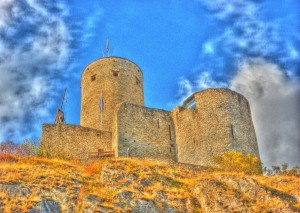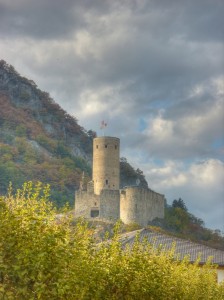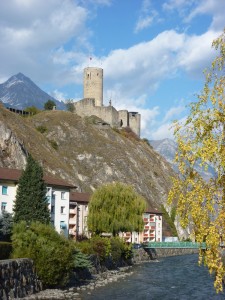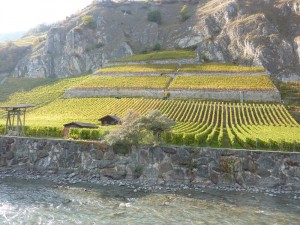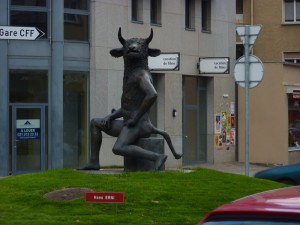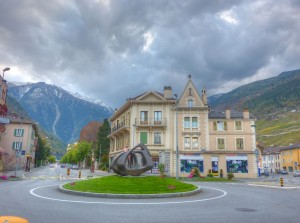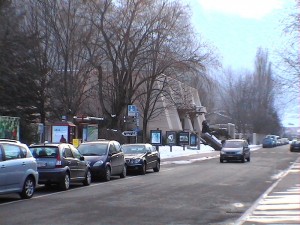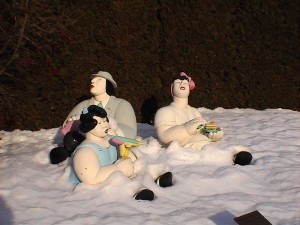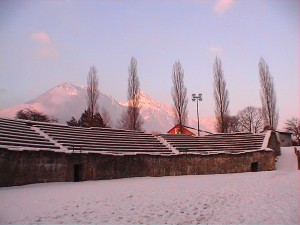The Saint Bernard Pass is one of the main routes from Western Switzerland to Italy. The road to it starts at Martigny, travels through the Dranse River valley with its numerous vineyards and orchards growing apricots. Keeping to the main road instead of forking left for Verbier is a little traumatic for me, but to get to Italy I’ve no choice. 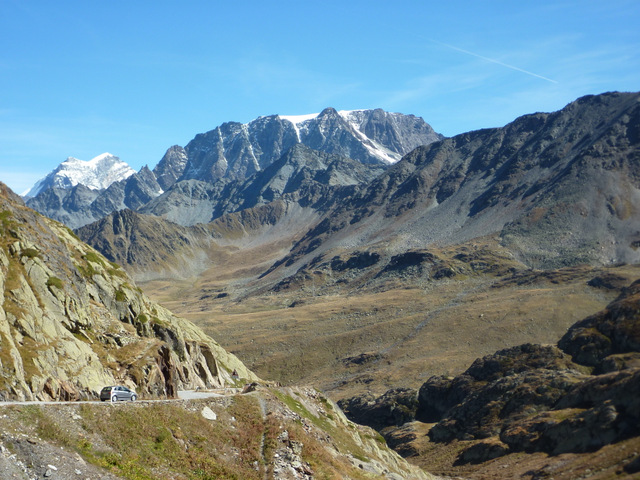 The road goes up the right hand valley until we reach the terminus of the Saint Bernard Express train at Orsieres. It then climbs through tiny villages with half wooden buildings and window boxes with bright red flowers, past hydroelectric dams of azure glacier melt water until it enters an avalanche tunnel. Then after a couple of kilometres the road forks into the Saint Bernard Tunnel or right to the pass. After half a kilometre you could be on the on a pass in Welsh, Snowdonia. But the snowcapped mountains behind remind us that we are in the Alps as this is September. Another strong clue was ice in the shadows under the large rocks at 11 am.
The road goes up the right hand valley until we reach the terminus of the Saint Bernard Express train at Orsieres. It then climbs through tiny villages with half wooden buildings and window boxes with bright red flowers, past hydroelectric dams of azure glacier melt water until it enters an avalanche tunnel. Then after a couple of kilometres the road forks into the Saint Bernard Tunnel or right to the pass. After half a kilometre you could be on the on a pass in Welsh, Snowdonia. But the snowcapped mountains behind remind us that we are in the Alps as this is September. Another strong clue was ice in the shadows under the large rocks at 11 am.
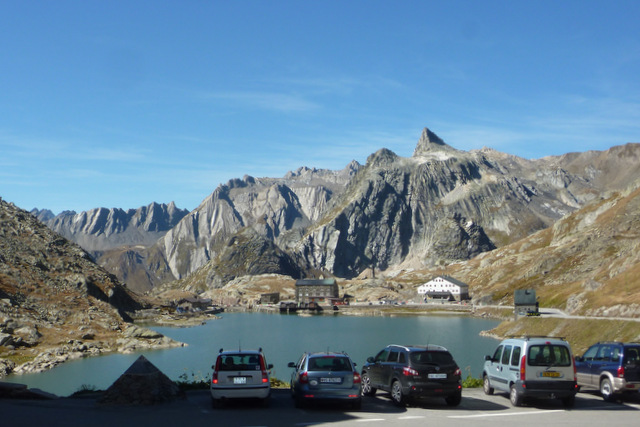
Eventually the summit is reached at the Hospice. Here a sign informs all that the altitude is 2473 m or 8114 feet. There are also signs recording how Napoleon took an army of 46292 men in May 1800 on his way to attack the Austrians who were besieging French held Genoa. But over the millennia many armies have used the pass. It is believed that the pass has been an important crossing point since the Bronze Age. It is possible to make out the old Roman Road from the current road on the climb.

The hospice for travellers was set up by Saint Bernard of Menthon in 1049. The pass has carried his name since the 16 th century. St Bernard’s concern in the first instance was to make the pass safe from bandits for travellers. From this initial role they moved on to providing a rescue service. To this end the Saint Bernard dog was bred large enough to cross deep snow and locate missing persons. The story of them carrying brandy is a myth. Saint Bernard was made Patron Saint of the Alps in 1923 by Pope Pius XI.
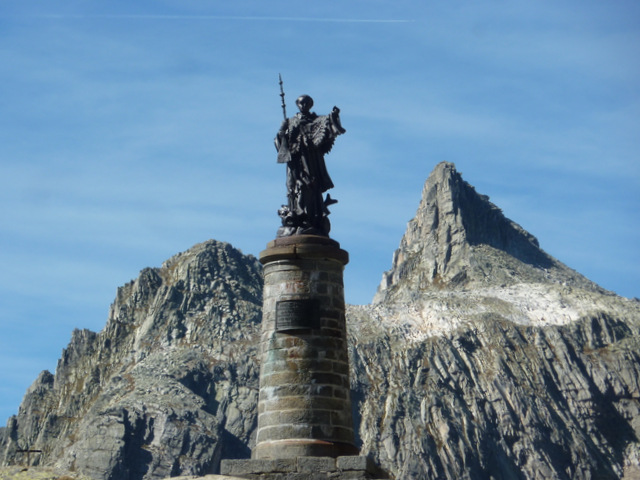
A statue of Saint Bernard can be viewed below the summit of the pass on Italian territory. It is built on the site of old Roman ruins.
[googlemaps width=640 height=480]

